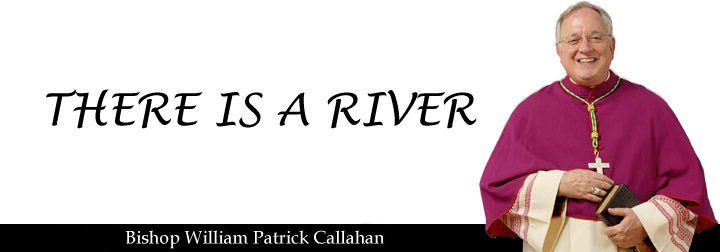As strange as it may seem to some of us, the time is almost May! With the early spring and negligible winter, we are confronted with a beautiful and symbolic month. It’s time once more for May Altars and May Crownings; all those wonderful rituals of our “cultural” faith that remind us of our deep love and admiration for the Mother of God.
The great Jesuit poet, Gerard Manley Hopkins (1844-1890) wrote a beautiful poem entitled: “The May Magnificat.” It begins simply enough:
May is Mary’s month, and I
Muse at that and wonder why –
There is, of course, much more to the poem, but for our purposes the object of the poet’s musing does stir some curiosity for us, I’m sure. As we know, the various months of the year are dedicated and held sacred for various aspects of our spiritual lives. For example, next month, we shall honor the Most Sacred Heart of Jesus in June, July the Most Precious Blood, and so forth.
May, however, is Mary’s month and it is certainly good for us to sanctify the time with Our Mother. Simply enough, May is the month filled with the somewhat steady growth of fresh blossoms and beautiful flowers. May is Mary’s month, the month for spring’s return of flowers. As the flowers return we honor Mary whom we call the “Mystical Rose.”
The Christian custom of dedicating the month of May to the Blessed Virgin arose at the end of the 13th century. In this way, the Church was able to Christianize the secular feasts that took place at various times. In the 16th century, books appeared and fostered this devotion.
The practice became especially popular among the members of the Society of Jesus – the Jesuits – and by 1700 it took hold among their students at their college in Rome and a bit later it was publicly practiced in the Church of the Gesu in Rome. From there it spread to the whole Church.
The month lends itself so perfectly for us to contemplate and celebrate Mary. It is typically Easter season, the time when we clearly reflect upon the newborn Church’s infancy. Who better to consider in this than our Mother, to whom our Blessed Savior Himself commended the Church as He died on the cross? Who better leads us to ponder the Mysteries of Salvation – the Risen Lord – the Descent of the Holy Spirit – than the Woman who led the Apostles in these very events when they took place in our history? This season of refreshment and renewal is part of God’s great audio-visual production – a great display of being, that is meant to remind us of His love and His life.
Mary’s unique place in salvation history is celebrated during the month of May in a big way with the Solemnity of the Ascension and Pentecost typically found in this month. Mary, as the Mother of the New People, leads us and helps the Apostles to form the Church. She, who guided Jesus Himself in His earthly life, guides His Bride, the Church, as she takes her first steps into the world in His name, filled with the Spirit of His mission.
I believe the words of Pope Paul VI, from his encyclical “The Month of May,” (April 29, 1965) can be of great consolation and inspiration to us as we begin the month of May, 2012.
We are delighted and consoled by this pious custom associated with the month of May, which pays honor to the Blessed Virgin and brings such rich benefits to the Christian people. Since Mary is rightly to be regarded as the way by which we are led to Christ, the person who encounters Mary cannot help but encounter Christ likewise. For what other reason do we continually turn to Mary except to seek the Christ in her arms, to seek our Savior in her, through her, and with her? To Him men are to turn amid the anxieties and perils of this world, urged on by duty and driven by the compelling needs of their heart, to find a haven of salvation, a transcendent fountain of life.
Because the month of May is a powerful incentive to more frequent and fervent prayers, and because our petitions more readily find access to her compassionate heart during it, it has been a favorite custom of our predecessors to choose this month, dedicated to Mary, for urging the Christian people to offer up public prayers whenever the needs of the Church demanded it or some grave crisis threatened the human race. This year, Venerable Brothers, we in turn feel compelled to call for such prayers from the whole Catholic world. Looking at the present needs of the Church and the status of world peace, We have sound reasons to believe that the present hour is especially grave and that a plea for concerted prayer on the part of all Christians is a matter of top priority.
…and I’ll see you at Sunday Mass!
